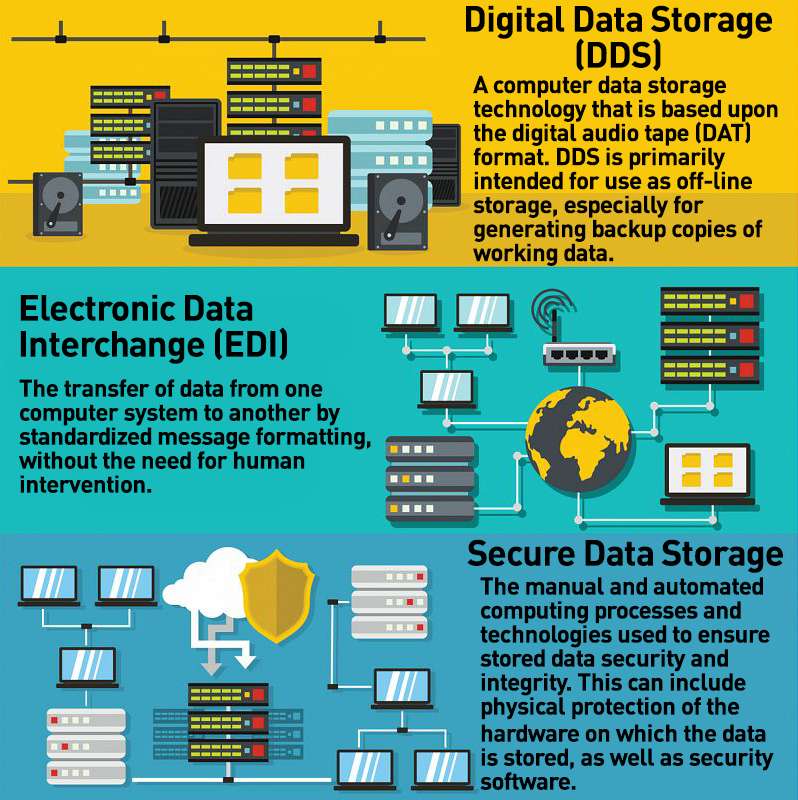Comprehending the Duty of Data Destruction in Strengthening Cyber Security Defenses
The Importance of Effective Information Damage Practices in Shielding Sensitive Info and Ensuring Computer Security
In a period where information violations are significantly usual, the significance of efficient data devastation methods can not be overemphasized. Organizations face substantial threats when sensitive details is inadequately disposed of, potentially leading to unapproved access and severe financial consequences. Executing durable data devastation techniques not only minimizes these dangers yet likewise lines up with legal conformity demands, guaranteeing that organizations support their track record and foster client depend on. Nevertheless, the inquiry stays: what specific techniques can be utilized to improve these methods, and just how can organizations properly incorporate them into their general cybersecurity framework?
Comprehending Information Destruction
Comprehending data devastation is critical in today's digital landscape, where sensitive info can easily be endangered. Reliable information damage involves not just making certain yet removing files that data is irretrievable through extensive techniques. This procedure is important for companies that manage private customer information, copyright, or interior records, as any kind of violation can result in extreme economic and reputational repercussions.
Data devastation encompasses various techniques, consisting of shredding physical media, degaussing magnetic storage space devices, and using software-based remedies that overwrite information several times. Each approach offers a details purpose and needs to straighten with the level of sensitivity of the info being dealt with. Physical devastation is frequently liked for hard drives consisting of very personal information, while software application approaches might be adequate for much less sensitive details.
Additionally, sticking to industry requirements and laws, such as the General Information Security Law (GDPR) or the Health And Wellness Insurance Mobility and Responsibility Act (HIPAA), is crucial for compliance and to reduce legal dangers. Organizations should develop a durable data damage plan, train employees on finest techniques, and consistently audit their procedures to ensure that all delicate information is thrown away firmly and properly.
Risks of Inadequate Practices
Poor information destruction methods subject organizations to substantial dangers that can have far-reaching consequences. When sensitive info is not properly taken care of, it remains vulnerable to unauthorized access, which can bring about data violations and identification theft. Such occurrences not just jeopardize the security of people yet additionally taint the organization's credibility, resulting in a loss of client trust fund and potential financial repercussions.
Moreover, regulatory conformity is significantly rigorous in many markets. Failing to follow information destruction regulations can lead to significant penalties and lawful activities against organizations. These penalties can divert and stress financial sources interest from core organization operations.
In addition, the abuse of residual information can result in intellectual residential property burglary or corporate reconnaissance, endangering affordable benefits (data destruction). The effect of poor information damage prolongs beyond prompt monetary losses; it can also cause long-term damage to brand honesty and market setting

Organizations must recognize that information safety is not exclusively about preventing violations; it additionally incorporates the liable management of information throughout its lifecycle. Neglecting effective data damage methods can have catastrophic effects, highlighting the requirement for durable procedures to mitigate these risks.
Ideal Practices for Data Devastation
Applying efficient data destruction techniques is vital for safeguarding delicate information and maintaining compliance with regulatory standards. Organizations needs to adopt a multi-faceted strategy to make sure that data is irretrievable, therefore preventing unapproved accessibility and potential violations.
First, information need to be categorized based upon sensitivity, enabling companies to use suitable devastation approaches customized to the level of danger. For electronic information, making use of software-based data-wiping devices that conform with market criteria can effectively overwrite existing data. Physical devastation methods, such as shredding or degaussing, are critical for devices that save delicate information, ensuring complete removal.
Developing a clear data retention policy is vital, detailing how much time different sorts of information must be kept prior to damage. Regular audits of data storage systems are likewise essential to recognize obsolete or unneeded information needing elimination.
In addition, training staff members on the value of information damage and the details methods to follow fosters a culture of security within the company. Maintaining documentation of information devastation refines offers responsibility and supports conformity with external regulations and internal policies. By adhering to these finest practices, organizations can significantly mitigate the threats linked with information direct exposure.
Legal and Compliance Factors To Consider

Failing to follow these laws can result in serious charges, consisting of substantial penalties and reputational damage. Organizations should implement a robust information destruction policy that straightens with these legal frameworks and offers clear standards on the appropriate methods of information disposal, whether physical shredding or electronic wiping.
Additionally, preserving documents of information damage tasks is important for demonstrating conformity throughout audits or inspections. By focusing on legal and conformity considerations, companies can improve their data protection posture and foster depend on with customers and stakeholders, ultimately contributing to a more protected data management atmosphere.
Advantages of Effective Data Devastation
Efficient information damage techniques extend past plain compliance; they offer significant advantages to organizations that prioritize news them. By making sure that delicate details is irretrievably damaged, companies alleviate the risk of information breaches and the prospective monetary effects connected with them. This positive method not just safeguards versus unauthorized accessibility yet likewise boosts the general credibility of the organization in the eyes of customers and stakeholders.
Executing robust information devastation techniques, such as physical destruction of storage space devices or advanced information cleaning strategies, contributes to the conditioning of an organization's cybersecurity pose. data destruction. It reduces the probability of copyright theft and secures exclusive information, thus keeping an one-upmanship in the market

Conclusion
In conclusion, efficient data destruction practices are vital for securing sensitive information and enhancing total computer protection. Eventually, a dedication to robust information destruction methods promotes a society of responsibility, consequently enhancing an organization's cybersecurity posture and keeping customer count on.
